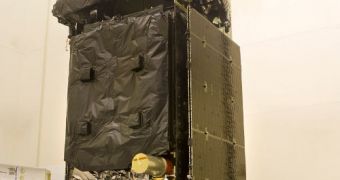On Friday, May 6, the United States military will launch the first of a new series of satellite into Earth's orbit. Take-off is scheduled to occur in a window of opportunity spanning from 2:14 pm EDT (1814 GMT) to 2:54 pm EDT (1854 GMT).
The spacecraft was developed by Lockheed Martin for the US Air Force, and the spacecraft is called the Space Based Infrared System (SBIRS) geosynchronous (GEO-1) satellite. The instrument will play a large number of roles once launched.
For starters, it will significantly increase the country's ability to detect and gather technical intelligence. The military will also become capable of enhancing its warfighters' awareness on the battlefield.
In addition, the first SBIRS spacecraft will provide increased operational capabilities for the ballistic missile defense system that protects the nation against foreign aggression. GEO-1 will play a critical role in detecting rocket launches anywhere in the world.
It will be carried to orbit aboard an Atlas V delivery system, which is designed and built by the United Launch Alliance. ULA is a joint venture between Lockheed Marting and the Boeing Company.
The spacecraft will take off from the Cape Canaveral Air Force Station (CCAFS), in Florida. The past few days, it looked as if shuttle Endeavour's final launch may have to be delayed due to schedule conflicts with the GEO-1 launch.
However, it was determined that the orbiter had issues that needed fixing immediately, so the scheduling conflict disappeared. The CCAFS is located right next door to the NASA Kennedy Space Center (KSC), the home of the US shuttle fleet.
“SBIRS GEO-1 represents the dawn of a new era in overhead persistent infrared surveillance that will greatly improve national security for years to come,” explains the director of the USAF Infrared Space Systems Directorate, Brig. Gen. Roger W. Teague.
“We look forward to getting this next generation system on orbit and delivering its enhanced capabilities to the warfigher,” the official goes on to say.
“SBIRS GEO-1 will usher in a new era of critical missile warning capabilities vital to our national security, and we are focused on delivering mission success for the warfighter,” adds Jeff Smith.
“The dedication, talent and integrity of the entire SBIRS team has been remarkable, and this launch will be a testament to every individual who has supported this vitally important program,” he says.
Smith is the vice president of Lockheed Martin, and also the director of the SBIRS program.

 14 DAY TRIAL //
14 DAY TRIAL //